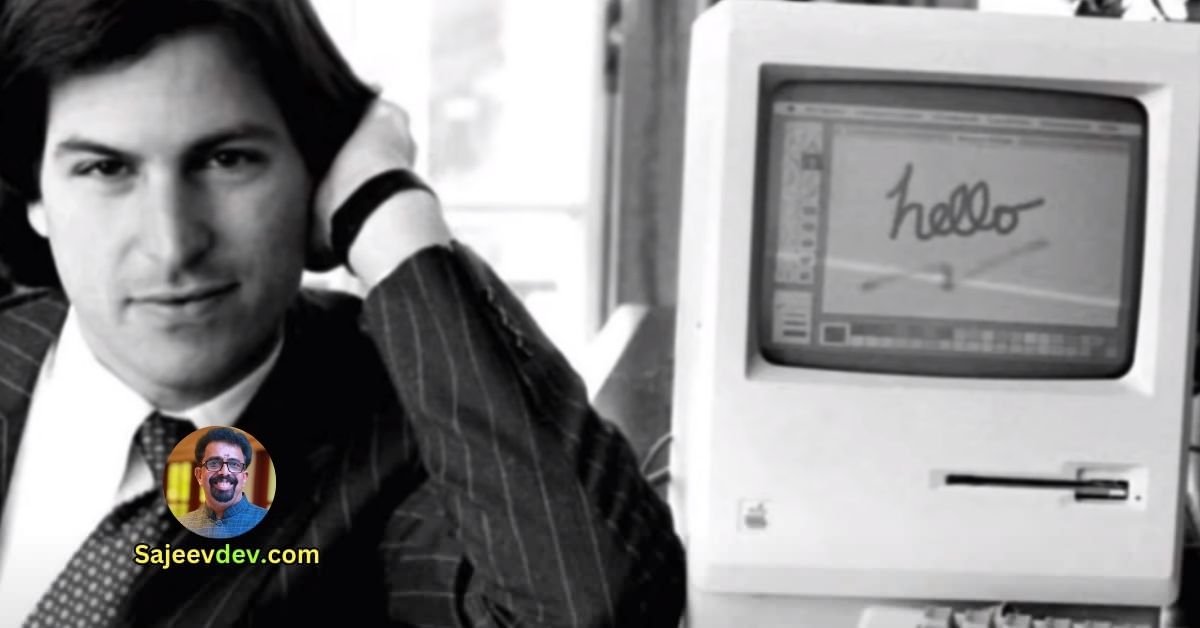The story of Apple Inc. is one of vision, innovation, and relentless pursuit of excellence. At the heart of this remarkable journey is Steve Jobs, whose passion and determination turned a small garage startup into a global technology powerhouse. Steve Jobs’ journey with Apple is not just a tale of business success, but a testament to the power of creativity, perseverance, and believing in one’s vision.
The Birth of Apple: A Visionary’s Dream
In 1976, Steve Jobs, along with Steve Wozniak and Ronald Wayne, founded Apple Computer Inc. in Jobs’ parents’ garage. Their mission was simple yet revolutionary: to make personal computing accessible to everyone. The Apple I, their first product, was a modest beginning but laid the groundwork for what was to come. Jobs’ visionary thinking was evident even then; he saw potential in personal computers that others did not.
Innovation and Perseverance: The Early Years
Apple’s breakthrough came with the Apple II in 1977, a user-friendly machine that became a massive success. This success was fueled by Jobs’ insistence on attention to detail and user experience. Jobs believed that technology should not only be functional but also beautiful and intuitive. This philosophy became a hallmark of Apple’s products.
However, the journey was not without challenges. The launch of the Apple III and the Lisa computer faced significant setbacks. Yet, Jobs’ resilience never wavered. He continued to push boundaries, culminating in the introduction of the Macintosh in 1984. The Mac was a game-changer, featuring a graphical user interface that set the standard for future personal computers.
The Ouster and the Return: A Story of Redemption
Despite his contributions, internal conflicts led to Jobs being ousted from Apple in 1985. This could have marked the end of his journey with Apple, but Jobs saw it as an opportunity for growth. He founded NeXT, a company focused on advanced workstations, and acquired Pixar, which revolutionized animated films.
In 1997, a struggling Apple bought NeXT, bringing Jobs back into the fold. His return marked the beginning of a new era for Apple. Jobs wasted no time in revamping the company, introducing a streamlined product line and focusing on innovation. His vision was clear: to transform Apple into a leader in technology and design.
The Renaissance of Apple: Innovation at Its Best
Under Jobs’ leadership, Apple embarked on an unprecedented journey of innovation. The introduction of the iMac in 1998 marked a turning point. With its sleek design and user-friendly interface, the iMac was a huge commercial success and reestablished Apple’s position in the market.
Jobs’ commitment to innovation didn’t stop there. In 2001, Apple launched the iPod, revolutionizing the music industry. The success of the iPod paved the way for the iTunes Store, which changed how people purchased and consumed music.
The biggest breakthrough came in 2007 with the introduction of the iPhone. Combining a phone, an iPod, and an internet communicator, the iPhone redefined the mobile phone industry. Jobs’ presentation of the iPhone was legendary, showcasing his unparalleled ability to captivate audiences and convey his vision.
Building a Legacy: The Core Principles of Jobs’ Success
Steve Jobs’ success with Apple can be attributed to several core principles:
- Visionary Thinking: Jobs had an extraordinary ability to envision the future of technology and how it could improve lives. His forward-thinking approach set the stage for Apple’s groundbreaking products.
- Relentless Pursuit of Excellence: Jobs’ attention to detail and insistence on perfection were integral to Apple’s success. He believed in creating products that were not only functional but also beautiful and intuitive.
- Innovation and Creativity: Jobs fostered a culture of innovation at Apple. He encouraged his team to think differently and push the boundaries of what was possible.
- Focus on User Experience: Jobs understood that technology should serve the user. He prioritized user experience in all Apple products, making them accessible and enjoyable to use.
- Resilience and Adaptability: Jobs faced numerous setbacks throughout his career, but his resilience and ability to adapt were key to his success. He viewed failures as opportunities to learn and grow.
The Enduring Impact: A Legacy of Innovation
Steve Jobs passed away in 2011, but his legacy continues to shape Apple and the technology industry at large. His visionary leadership transformed Apple into one of the most valuable companies in the world, with products that have become integral to modern life.
Jobs’ story is a powerful reminder that with vision, passion, and perseverance, anything is possible. His journey from a garage startup to leading a global technology giant is an inspiration to entrepreneurs and innovators everywhere. Steve Jobs taught us to dream big, embrace challenges, and never settle for anything less than excellence.
Steve Jobs’ journey with Apple is a remarkable tale of vision, innovation, and unyielding determination. His ability to foresee the future of technology, coupled with his relentless pursuit of excellence, transformed Apple into an iconic brand that continues to innovate and inspire. As we look to the future, Jobs’ legacy serves as a powerful reminder that the art of innovation lies in believing in your vision, embracing challenges, and striving for perfection in all that you do.



